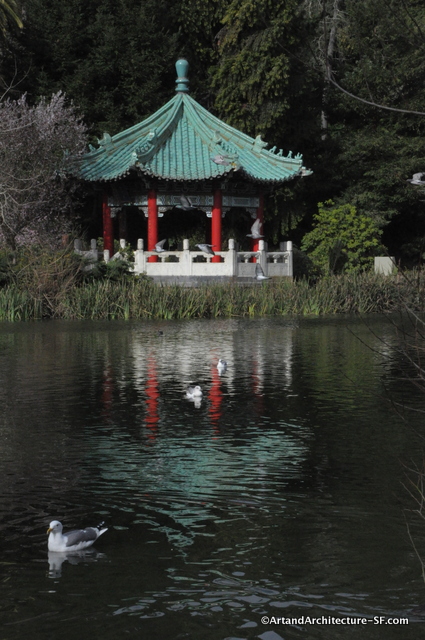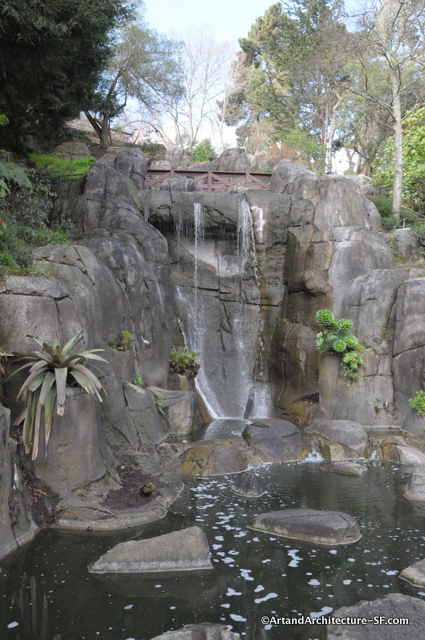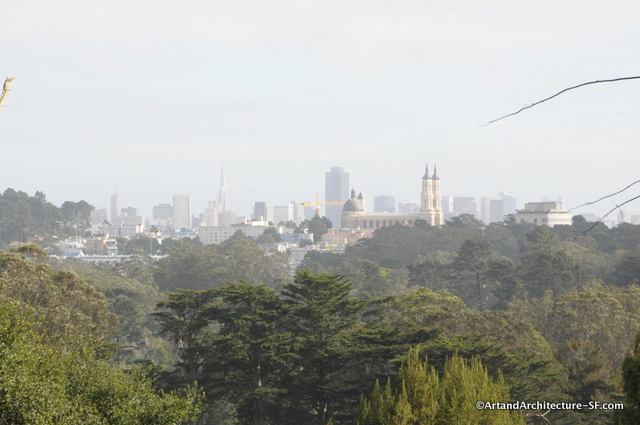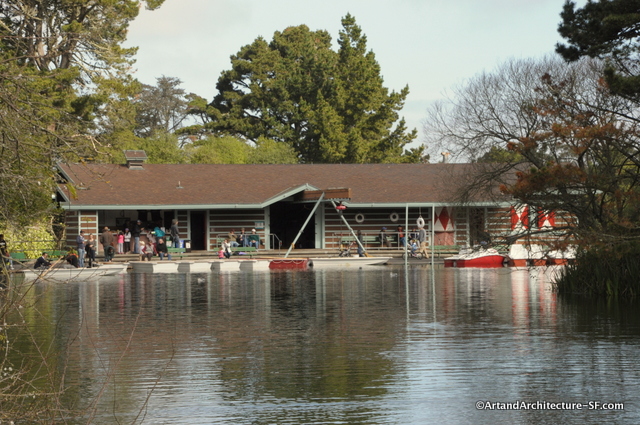Completed in 1893, Stow Lake is considered a landscaping masterpiece. Created out of sand dunes by park superintendant John McLaren, it is the largest of Golden Gate Park’s lakes. Massive holes were dug out of the sand, carloads of clay were wheeled in and windmills were built to draft water from natural wells. Strawberry Hill, the highest point in the park, became a central focus as an island in the middle of the lake. The Rustic Bridge and the Roman Bridge, both completed in 1893 and still standing, connect the lakeshore with the island, allowing visitors panoramic views from the crest of the hill. There is access to walking paths as well as to the stone staircase that parallels dramatic Huntington Falls, which at its top contains one of the reservoirs that supply a network of high-pressure water mains that exclusively supply specialized fire hydrants throughout the city.
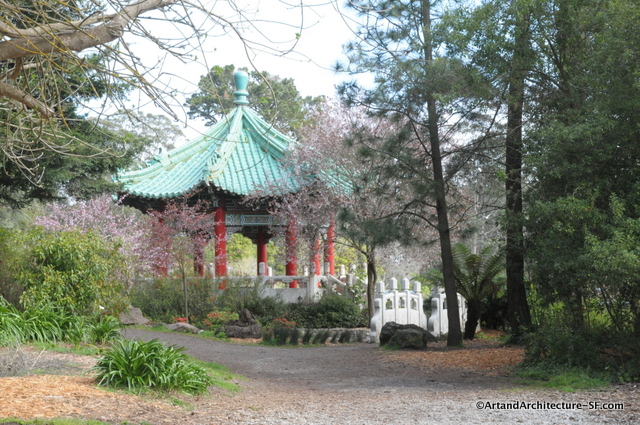 The Chinese Pavillion on the island. This structure was a gift from San Francisco’s sister city, Taipei, and was dedicated in 1981.
The Chinese Pavillion on the island. This structure was a gift from San Francisco’s sister city, Taipei, and was dedicated in 1981.
It is perfectly proportioned in size, decoration, and location. Considering how popular Golden Gate Park is, this location is quite peaceful as relatively few people take the walk around the lake to reach it.
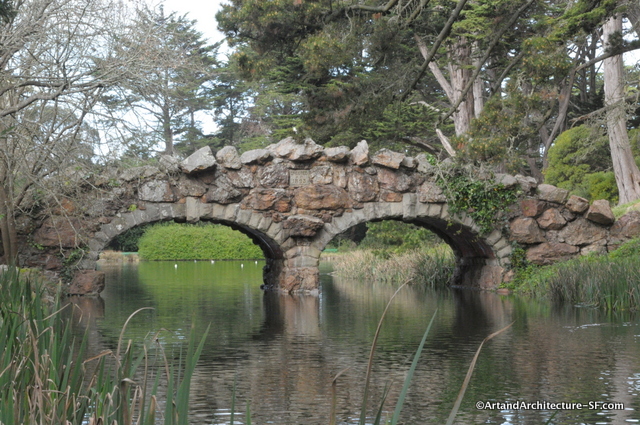 The Rustic Bridge across Stowe Lake to Strawberry Hill. Built using boulders dug out during the building of Stow Lake
The Rustic Bridge across Stowe Lake to Strawberry Hill. Built using boulders dug out during the building of Stow LakeThe bridge was designed by Arthur Page Brown. Arthur Page Brown was born in Adams, New York in 1859. He attended Cornell University and joined the prominent New York architectural firm of McKim, Mead & White as a draftsman. He received a formal training and then continued his architectural studies with a trip to Europe, returning to New York in 1885 to open his own practice. He was brought out to San Francisco in 1889 by Mary Ann Crocker to design a mausoleum for her husband Charles, president of the Southern Pacific Railroad, who had died the year before, to be placed on top of a hill in Oakland’s Mountain View Cemetery. He is most famously known for the San Francisco Ferry Building.
Designed by Warren Charles Perry, dean of UC Berkeley School of Architecture, the boathouse was built in 1946 for $34,249. This iteration replaces an 1893 rustic cabin style building designed by Arthur Page Brown.
